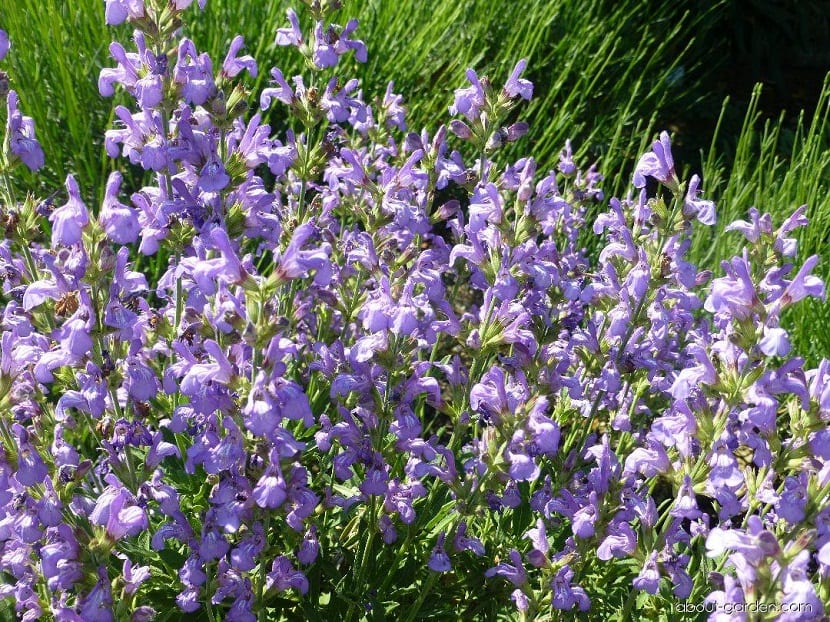
La Sage lavandulifolia It is from the genus Salvia and belongs to the great family Lamiaceae, made up of more than 900 species. It is used for therapeutic, nutritional purposes or simply as an ornamental plant.
It is an original species of the Mediterranean and is present in much of the Spanish territory, so It is known by the name of Spanish lavender. It is probably what the ancient Greeks and Romans used to perfume their bath water, in fact, the word lavender comes from the Latin lavare (to wash).
Features
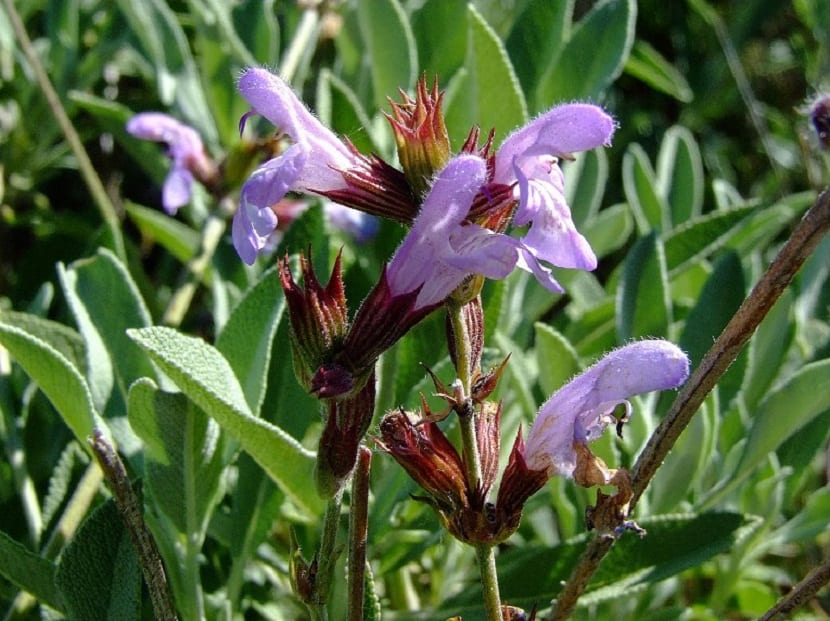
La Salvia lavanduifolia is a evergreen plant It can reach 60 cm in height, very resistant to droughts and low temperatures, it is unisexual and its pollination occurs through insects. Its leaves and flowers are edible and offer a very pleasant aroma. Its flowering occurs during spring and It is a species that adapts to all types of soils, especially those that are drained.
Propagation and care
In the greenhouses, the seeds are planted between March and April, germination commonly occurs two weeks later approximately. After making sure that they have reached the right size for handling and to know how to plant the sage, the first thing is to cut the seedlings and proceed to plant them in individual pots. It is best to plant in the greenhouse in its first winter and outdoors in late spring of the following year. In relation to wood cuttings, these work very well in any period of their development.
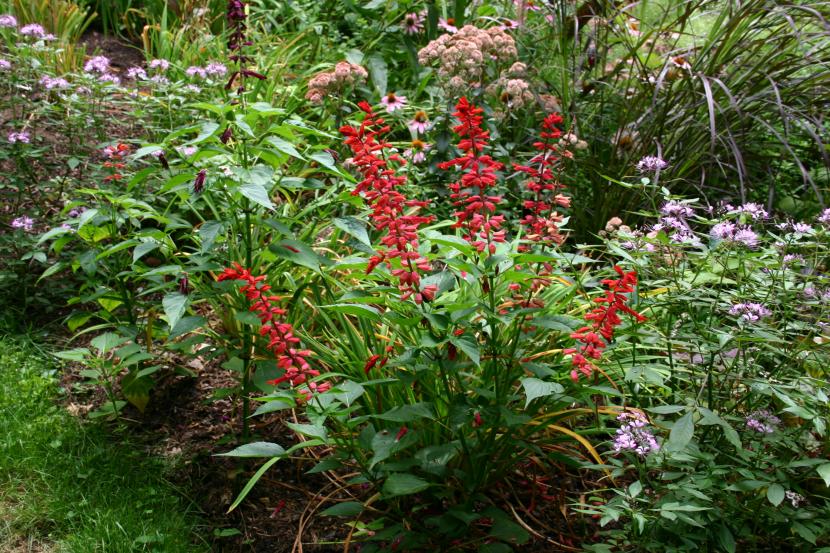
Light, limestone, dry or well-drained soils and in sunny exposure are preferable for planting. Adequate pH, acidic, neutral and alkaline soils. Salvia tolerates frost and can be grown without problem some in drained soil. Make the sowing of this plant at the beginning of the spring period and also in autumn; When you plant it, remember to leave a space of 60 centimeters between plants.
For being about plants resistant to very low temperatures and wind, they can remain outdoors throughout the year. The soil must be porous, because excess humidity is harmful for this species, so it is recommended that you avoid places where humidity is stagnant. Always remember that they endure drought well, but not abundant moisture. For this Salvia, the irrigation offered by the rain is enough and for its cultivation it is not necessary to use fertilizers.
Harvest
The used parts of the Sage lavandulifolia after its collection are its leaves and flowers. It is a plant resistant to climatic variations, wind and sun, so it can be collected at any time of the year. Nevertheless, it is recommended that you collect its leaves at the beginning of summer because in this period, exactly before flowering, its aroma is at its best. The drying of the harvested leaves is the best procedure to preserve the pleasant fragrance, to the point that it even magnifies it.
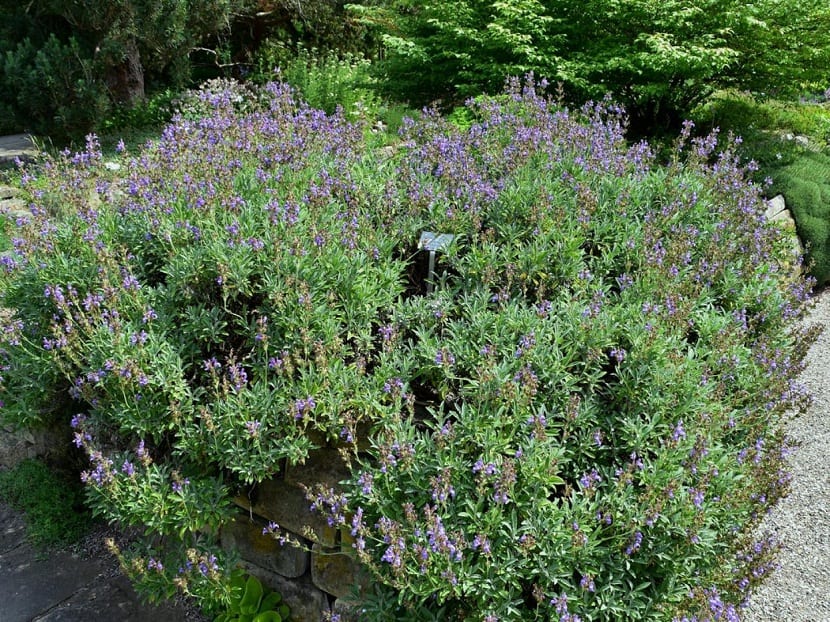
The size and thickness of the leaves make the drying process difficult, even more than in the case of other plants. For this you must put a wire on top and lay the leaves on it. When doing this, do not put too many leaves so that they do not rot. Afterwards, you must proceed to the drying of the leaves slowly, this way you will preserve all its fragrance. Once the process is finished, shred the leaves and store them in a sealed place.
Culinary use
La Sage lavandulifolia It has multiple culinary uses, especially due to its pleasant aroma. What's more, its flowers are used to decorate the dishes even to prepare delicious salads and aromatic infusions. Its leaves are used in cooking to flavor all kinds of meats such as pork, chicken, lamb, fish.
It is magnificent to accompany vegetables and vegetables, or if you prefer it with pasta, omelettes, cold cuts and even sauces made with wines. As if this were not enough, you can also decorate the soups. Salvia gives a rich dairy smell like cottage cheese, blanket and even vinegar, it also serves to give aroma to drinks. For all these advantages, It is an ingredient that goes hand in hand with Mediterranean cuisine.
Plagues and diseases
La Sage lavandulifolia It is prone to suffer from countless pests and diseases, to the point that it contradicts its name, since it derives from the Latin salus which means health. Furthermore, it seems a paradox that a plant that has so many medicinal properties is not strong and resistant to disease. However and to avoid it, you just have to pay a little attention to their care in order to continue enjoying their aroma and medicinal properties.
If the plant has a kind of white powder on its leaves, it is an unequivocal sign that it has been attacked by the powdery mildew fungus. a very harmful species that must be eliminated as soon as possible. The infection usually occurs on both sides of the leaf. The attack of this fungus occurs more frequently during the summer.
Now, if your plant has black spots on the leaves, it is a sign that it has been attacked by aphids, insects that are attracted by the sweetness of the plant. Black spots generally appear on the top of the leaf, that is to say, that in its beam and on its underside you can see a kind of white powder.
If the plant does not progress and its leaves turn yellowish, this is due to rot that may be affecting the roots of your plant. Possible causes of this disease include: Pythium splendens, a plant pathogen that particularly affects indoor plants and Rhizocthonia violacea, what is a fungus that envelops the roots of affected plants with a purplish or purplish coating.
If you observe that the leaves of your plant turn yellow and fall, this occurs due to the presence of nematodes, which are some small worms that attack organisms feeding on vital substances, so the plant becomes ill and deteriorates. Do you notice that the leaves are folded and show cobwebs? This means that the plant has been infected by a mite known as the Red spider, this insect feeds on the sap. When the cobweb is on the underside of the leaf, it is a sign that the infection is in an advanced stage.
Medicinal use
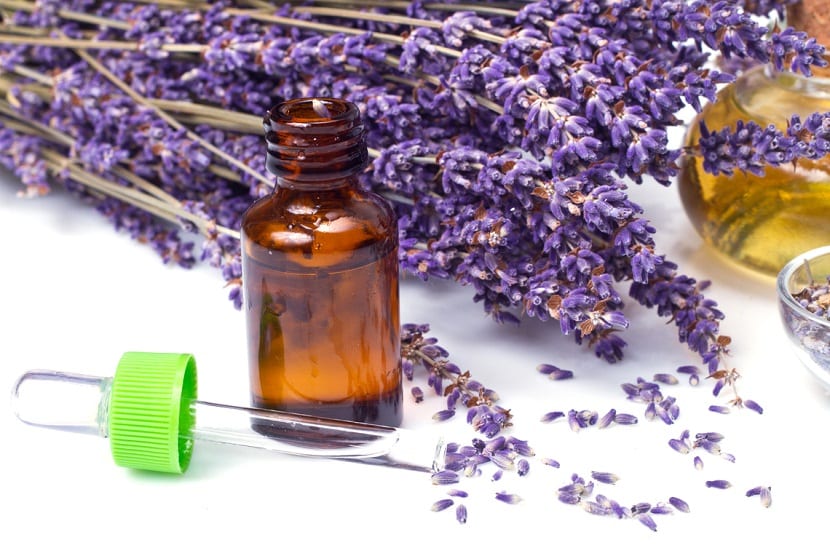
The medicinal virtues have been known for hundreds of years. Much has been said about the preparation of its leaves and flowers as a tonic for nervous anxiety, blood circulation, gastric disorders, regulation of the menstrual cycle, in addition, that it facilitates digestion.
It is also used to fight and treat the common cold, tonsillitis and flu states. It is used as antidepressant, antihistamine and recommended for intellectual fatigue That so much ails professionals and students. It is also used to prepare mouthwashes, using for this the leaves of Salvia for those small oral problems that sometimes appear. It is also used to purify the sick room, for this sage is burned.